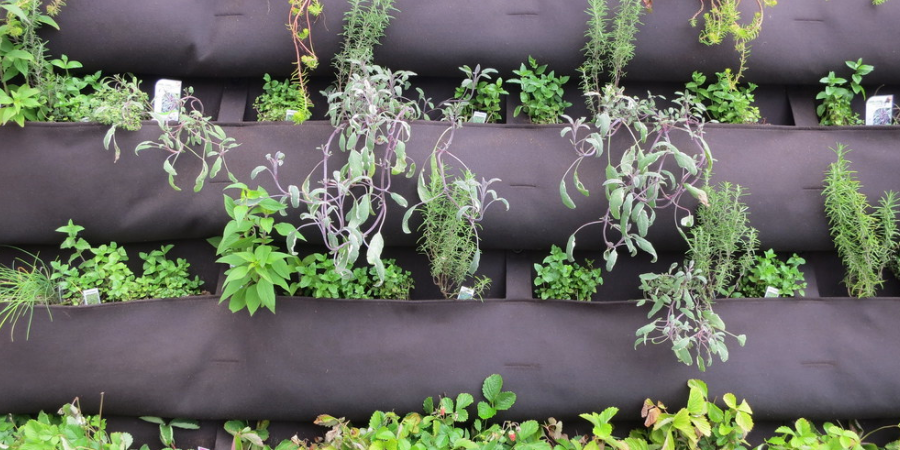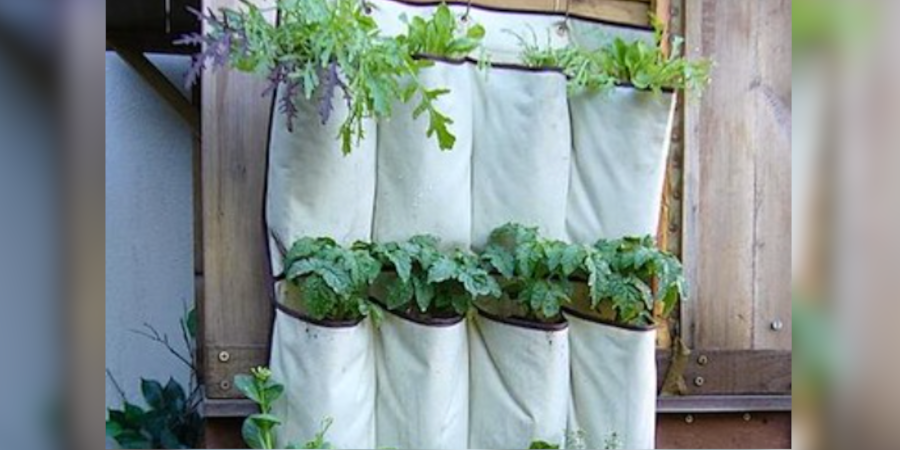Learning a new skill is an exciting and rewarding thing. Gathering up all the best information you can and synthesizing it into a useful thing you can do is fascinating and worth the trouble. By finding good sources and working through advice from the experts, you too can become an expert in something.
There is a lot of information out there about vertical gardening. If you have been interested in this unique style of gardening, there is no shortage of helpful sources available to you written by experienced gardeners. To help you get the expertise you need, we have put together some of the best books on vertical gardening available on the market.
Backyard Boss Top 5 Vertical Gardening Books of 2021
|
PRODUCT |
FEATURES |
||
|---|---|---|---|
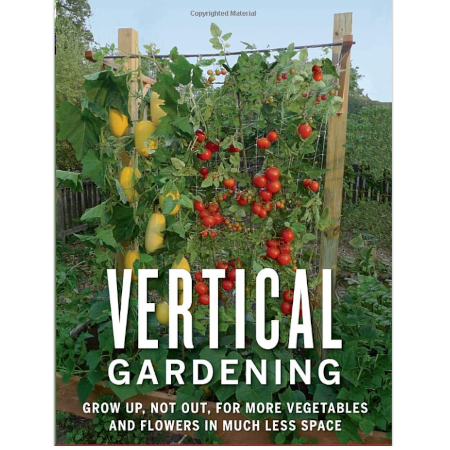
|
Vertical Gardening: Grow Up, Not Out, for More Vegetables and Flowers in Much Less Space |
|
|
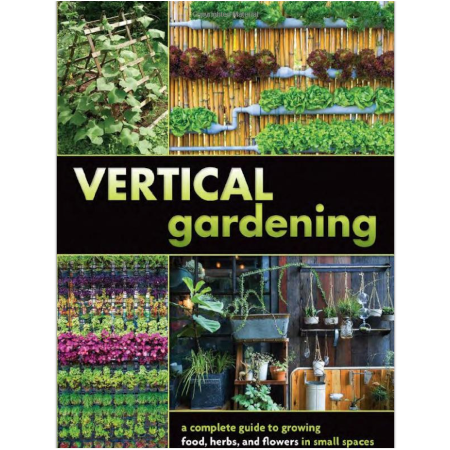
|
Vertical Gardening: A Complete Guide to Growing Food, Herbs, and Flowers in Small Spaces |
|
|
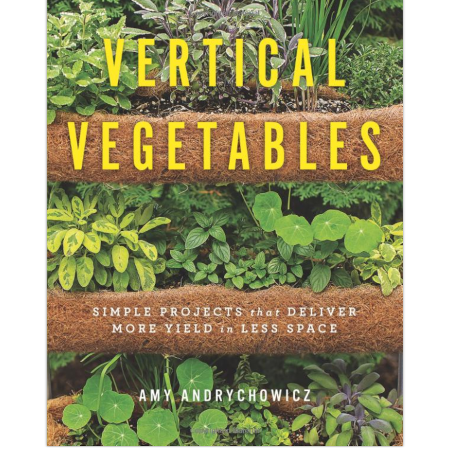
|
Vertical Vegetables: Simple Projects that Deliver More Yield in Less Space |
|
|
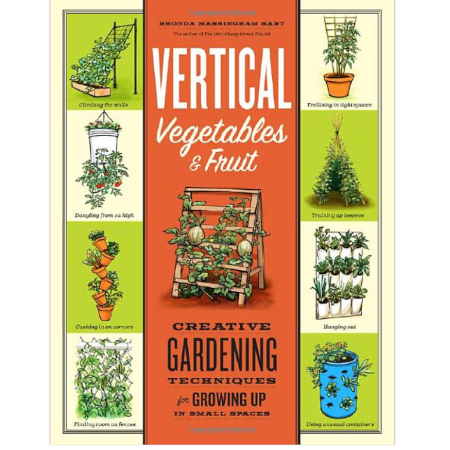
|
Vertical Vegetables & Fruit: Creative Gardening Techniques for Growing Up in Small Spaces |
|
|
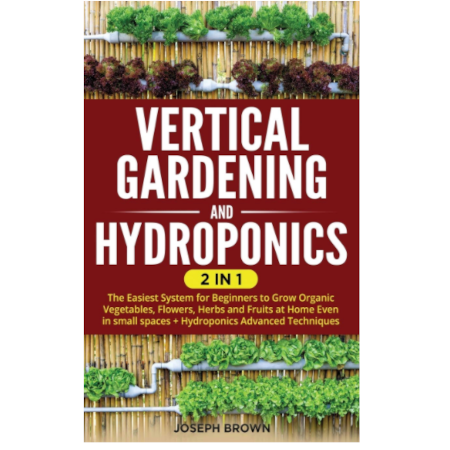
|
|
Why You Can Trust Us
In all my years of woodworking and gardening, I have done my fair share of research. While the internet can be a good source of information, it isn’t always the most comprehensive. If you want to learn a new skill, a book published by a major publisher is going to be your best bet. Most publishing houses do copious research, so make sure that all their information is accurate and from first-hand sources.
In all my time doing research and learning new things about home improvement and DIY, I have learned what to look for in a book. By looking for the best vertical gardening books available and presenting them on our list, I hope you can see why I have chosen them and pick the one that is right for you.
Best Selling Vertical Gardening Book
This is one of the best-selling books on the subject with comprehensive plans and all the information you could need
- Comes in hardcover
- Best-selling
- Expert information
- More complex
- Not for beginners
|
|
Why We Like It: This book, Vertical Gardening: Grow Up, Not Out, for More Vegetables and Flowers in Much Less Space, is one of the most comprehensive texts on the subject of vertical gardening.
The author, Derek Fell, has personally gone through and tested thousands of vegetables and fruits in a vertical garden to see which ones thrive in this type of setting. He has also developed his own system of growing vertical vegetables. It is easily accessible to all kinds of people and viable for almost any climate.
This book features many plans and designs of vertical gardens, including commercially available and others completely DIY. If you want access to many different types of this garden, this is a great resource for you. It’s no wonder it’s the best-selling book on the subject and has been in print for over ten years.
Who Should Buy It: People who want to get the most up-to-date and comprehensive information on the subject written by someone who has the experience to back it up.
Best Short Vertical Gardening Book
This is a great option for those who just want a cursory glimpse at the idea of vertical gardening
- Short
- Written by an expert
- For smaller yards
- No pictures
- Less comprehensive
|
|
Why We Like It: Vertical Gardening: A Complete Guide to Growing Food, Herbs, and Flowers in Small Spaces by Jason Johns is a short and to-the-point guide for beginners.
The author has been gardening for many years and wanted to share the enjoyment and convenience of vertical gardening for people of all means and skill levels.
Coming in at just 96 pages, it can be read and understood in an afternoon and won’t require a lot of technical knowledge to start utilizing the techniques. This book also features different photographs and diagrams to help you visualize the methods and apply them to your garden.
Who Should Buy It: People who don’t have a lot of time to sit down and read an incredibly long book but still want the expertise of someone who has worked with this kind of garden in the past.
Best Vertical Gardening Book with Plans
This is a guide to specifically growing vegetables and other edibles in your vertical garden
- Practical information
- Specific for bigger yields
- Focus on recycling
- No technical information
- Not as well-researched
|
|
Why We Like It: When you are learning something new, one of the most important things to look for is visual aids and experienced teachers.
This book, Vertical Vegetables: Simple Projects That Deliver More Yield in Less Space by Amy Andrychoqicz, is a great example of what you should be looking for in a book about a new skill. It features practical advice and lots of background information on this unique gardening style for your home or backyard.
This book also features detailed plans for trellises and other structures that you will need to have for your vertical garden. There is a lot to learn with vertical vegetable gardening, and having these visual aids will help you figure out what will work best for your particular space.
Who Should Buy It: People who are visual learners and would like some practical advice on what they need to get started with vertical gardening.
Best Basic Vertical Gardening Book
This is a great beginner's guide that will be helpful for those who are just starting out
- Good for beginners
- Bold illustrations
- Meant for apartments
- No technical plans
- More anecdotal
- Fewer advanced techniques
|
|
Why We Like It: This book, Vertical Vegetables & Fruit: Creative Gardening Techniques for Growing Up in Small Spaces by Rhonda Massingham Hart is a great example of the kind of basic introduction to vertical vegetable gardening that everyone should be starting with.
If you have just heard of this gardening style and want to have a solid foundation in the basics before you get started, this is a great jumping-off point.
This book will help you understand why vertical gardening could be a great solution to your space issues. It will also give you some practical advice on how to start and what you do and don’t need at the beginning.
Who Should Buy It: People who don’t know anything about vertical gardening and want to have a good basic understanding before they start.
Best 2-in-1 Vertical Gardening Book
This is a 2-in-1 guide to both vertical gardening and hydroponics so you can combine these two techniques
- Good for beginners
- Combined lessons
- 2 books in 1
- No technical plans
- Not as comprehensive as some
|
|
Why We Like It: If you are interested in space-saving gardening tips of all kinds, Vertical Gardening and Hydroponics: 2 Books in 1: The Easiest System for Beginners to Grow Organic Vegetables, Flowers, Herbs and Fruits at Home Even in small spaces + Hydroponics Advanced Techniques is an excellent resource.
Vertical method gardening and hydroponics go hand in hand, and they are both excellent methods for getting the most out of a small area. If you want to combine these two gardening techniques for your home, this could be a great choice to learn how.
Who Should Buy It: People who want to learn how to get a high yield out of their small garden and would like to have the best skill set for both.
Why Vertical Gardening?
Image credits: Ruth and Dave via Creative Commons
Vertical gardening is one of the best gardening solutions for people who might not have as much space available to them as they want. Essentially, vertical gardening entails growing plants that grow upwards instead of outwards. Many different types of plants grow this way, and setting your vertical garden up for success means understanding why it can be such a great way to get your vegetables growing.
Vertical gardening is the best way to get a garden growing if you live in an urban setting. Many people who live in cities and apartment buildings lament that they don’t have space for a garden. It is one of the downsides of living in a highly-populated area. Luckily with vertical vegetable gardens, you only need a few square feet of horizontal space to plant a thriving garden.
With this technique, you build trellises and vertical structures for plants to climb up as they grow instead of out. You can also plant smaller plants in trays, and structure them on top of one another on a rack, whereas with a traditional garden, you would usually have them side by side. It allows the vining plants to grow as they normally would but with saving a lot of space.
Vertical gardens can also be grown in any number of ways. Many people have had good luck with growing vining plants in discarded pallets and hanging baskets on the sides of their buildings. The nice thing about this technique is that you are not limited to a specific type of structure and can make it work however you would like. It is the best-suited technique for a creative person and can even turn into a design element of your space with a little bit of careful planning.
What Plants Grow in a Vertical Garden?
Image credits: wiccahwang via Creative Commons
Vertical gardens can be used to grow almost any type of plant and beautiful flowers. Depending on the structure of your garden, there is almost no limit to what you can grow. However, there are a few types of plants that will take up the least amount of horizontal space and will yield some of the best results.
Pole beans are one of the best vegetables for growing with a vertical garden. Pole beans naturally grow upwards and will climb up any structure that they are planted next to. Because of this, they can be grown in a single pot with a post secured in the soil. It makes pole beans a great choice for apartment living and other types of small residences.
Tomatoes are another great option for growing in a vertical garden. By securing the vining plants to a trellis, you can get them to grow upwards instead of outwards, and they will be able to support themselves on the structure as the fruit blossoms. They can even be grown without soil hydroponically if you want to grow them indoors with a grow light and have tomatoes all year long.
How We Picked
The books we chose for this list are all incredibly popular with novice and advanced gardeners. They are some of the top sellers in this genre, and some have been in print for many years. Because of this, the information within them is as accurate as you’re going to find and will continue to be relevant even as techniques change and the needs for different methods come up.
We also chose books written by people who understand the subject and are avid gardeners themselves. One of the only ways to learn something is by trial and error, and the authors of these books have gone through the process of vertical gardening over and over to bring you some of the best information on the subject.
The Best Vertical Gardening Books - Our Verdict
All of the books on our list will be sufficient for learning how to do vertical gardening, but Vertical Gardening: Grow Up, Not Out, for More Vegetables and Flowers in Much Less Space is one of the best resources available. It is by far the most comprehensive and is backed by a lot of experience and research. If you want to learn from an author who has done the correct due diligence, this is your best option.
Learning how to garden isn’t as complicated as it might seem. Vertical gardening, in some ways, is even easier. By taking advantage of the right resources and making sure that you are learning from the best, you can have your own vertical garden no matter how little space you might have where you live.
Have you read a book on creating a vertical garden that taught you everything you needed to know? Let us know about it in the comment section below!


